Olympus has just released the M.Zuiko 12-200mm F3.5-6.3 which joins their current two superzoom lenses, the 12-100mm F4 IS PRO and the 14-150mm F4-5.6. The new 12-200mm lens has weather-sealing but is not positioned as a PRO grade lens. The existing 12-100mm F4 IS PRO (review here) is an exceptionally sharp lens for such a long zoom range. While the non-PRO 14-150mm F4-5.6 lens (article here) may not achieve the same level of optical performance as the 12-100mm PRO, it performs slightly better than basic kit lenses offered by Olympus, and has weather-sealing making it a great all-in-one solution. In this article, I want to test the newly launched 12-200mm lens and find out where it sits in the lineup.
Before we proceed, I must reiterate my position as Olympus Visionary, a brand ambassador for Olympus Malaysia. This article is not a review of the 12-200mm lens but simply me sharing my experience with it as a photographer. There will be no direct side by side comparison between this and other lenses. The 12-200mm lens was on loan from Olympus Malaysia and has since been returned. Another note worth mentioning – I am not a fan of superzoom lenses. No matter how optimized a superzoom lens may be, it is almost impossible to surpass the optical quality of a prime lens. I acknowledge this may be my personal preference and for others, the convenience of having a versatile zoom range outweighs ultimate image quality.
The 12-200mm lens is quite compact but it does extend quite a bit at the longest tele-end.
Looking at the official specification sheet, the Olympus M.Zuiko 12-200mm F3.5-6.3 lens does not have anything extraordinary to shout about (except for the first of its kind 24mm to 400mm zoom range). Olympus has managed to manufacture a reasonably compact lens at a comfortable weight of 455g, of course the tradeoff is variable aperture of F3.5 to 6.3. While the lens takes a 72mm filter, the overall barrel diameter is smaller. The lens does extend to almost twice its original length at the long end (200mm) and close up shooting is rated at a maximum of 0.46x magnification, which is respectable. The 12-200mm is weather-sealed against dust and splash and has special nano coating to mitigate flare and ghosting problem. A plastic flower-petal design hood is provided.
For a full specifications list of the Olympus 12-200mm lens, check out the official product page here.
To test this lens, I subjected it to various shooting conditions, from typical wide angle cityscapes, street photography at the medium-telephoto end and lastly, bird photography to test the telephoto end of the lens. I even tested under harsh and high contrast situations for flare and chromatic aberration control. As the 12-200mm is not a PRO grade lens, I was not expecting the optical performance to match the 12-100 F4 PRO lens. All images are shot with Olympus OM-D E-M1 Mark II in RAW and post-processed with Capture One Pro software. All images are uncropped, unless otherwise mentioned.
So the big question is: can Olympus truly make a lens with such an incredible zoom range from 12 to 200mm without compromising optical performance too much?

200mm, F6.3, 1/1250sec, ISO200
Starting the test at 200mm, I was not blown away: I was expecting the signature crisp results from the Olympus JPEG previews that I am so used to seeing, especially when using a PRO lens like the 40-150mm F2.8 PRO and 300mm F4 PRO. That was my problem, my expectations were too high and I had to remind myself the 12-200mm is not a PRO lens and I should not treat it as such. Recalibrating for my expectations, the results were reasonably sharp and usable. The sharpness is similar to what I remember seeing from the 75-300mm and 40-150mm R lenses, with the 12-200mm having a slight advantage in terms of overall detail retention and having better contrast.
If you paid attention to the bird shots above, you will also notice that they were all under heavy shade and light was not ideal. An aperture of F6.3 can be an issue for wildlife under less than ideal light. The birds kept moving and in order to have sufficient shutter speed to freeze movement, you may have to bump up the ISO. I opted to stay at lower ISOs and waited patiently for the birds to stop moving before taking my shot. I relied on the 5-Axis Image Stabilization on the E-M1 Mark II to stabilize my shot, and it worked effectively. I managed sharp images, provided a perfectly still subject, even at a slow shutter speed of 1/20th second.
For those of you interested in finding out how quickly the widest F-number changes with the zoom, here is quick list of focal length vs maximum aperture:
12mm – F3.5, 17mm – F4.2, 25mm – F4.7, 40mm – F5.3, 50mm – F5.7, 75mm – F6.1, 100mm – F6.2, 112mm onward – F6.3
It is interesting to note that from 12mm to 50mm, the aperture range is F3.5-5.7, which is similar to the basic kit lenses offerings from Olympus. I was hoping to have F5.0 up till 100mm, but it was already at F6.2 – not very helpful when shooting in dim light. Don’t forget that at such narrow apertures openings plus the smaller sensor, achieving a shallow depth of field will be difficult. If you use Micro Four Thirds and you intend to have nice out of focus backgrounds in your shots, I’d direct you to the many prime lenses with a fast F1.8 aperture.
Next, in examining the mid range zoom performance of the lens, I found that anything longer than 100mm on the lens shows a decline in overall sharpness. From 12mm to 100mm, the lens performs better than I anticipated. It’s sharper than the basic kit lenses that over the same focal lengths.
There is obvious software correction at work to reduce chromatic aberration as well as manage barrel and pincushion distortions. The in-camera correction data is also stored in the RAW file, which allowed easy one click correction when using any post-processing software. After the optimization, I find the images to be distortion free and can find little to no purple fringing even at wide angles under harsh light. The software does struggle in an extreme scenario with high frequency detail and cannot successfully get rid of all traces of purple fringing. Even so, a quick retouching with any software can rectify the purple fringing.
What I was surprised with was the flare resistance, the nano coating on the lens is, I’m happy to report, not just a marketing trick and is effective. This is probably an area where the 12-200mm outperforms many of the higher grade Olympus lenses. I can get flare with less effort with 12-40mm and 12-100mm PRO lenses. I had the hood attached at all times during my shooting with the 12-200mm lens so I did remove it just to see if the lens gets more susceptible to flare and ghosting, but the results remain unchanged.
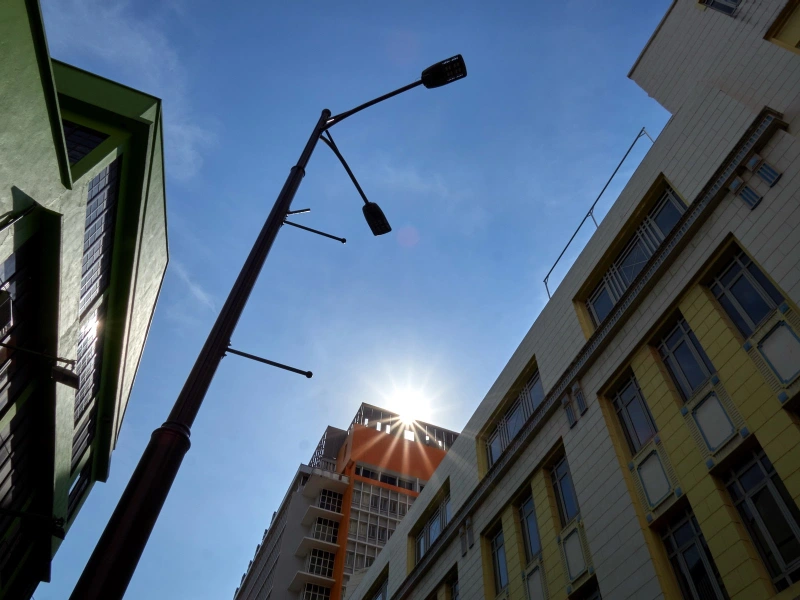
12mm, F22, 1/160sec, ISO200, The starburst effect is quite pleasant at wide angle 12mm
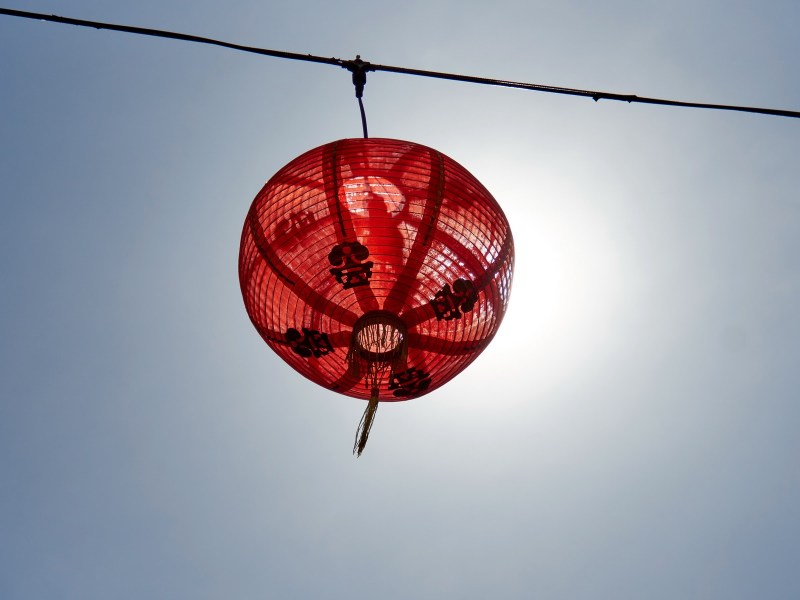
94mm, F8, 1/8000sec, ISO200, backlight shooting is very good with this lens. Yes there are dust spots and I should get the sensor cleaned soon.

12mm, F5.6, 1/1600sec, ISO200, distortion is well controlled, and no purple fringing observed. Effective in camera software correction at work here.
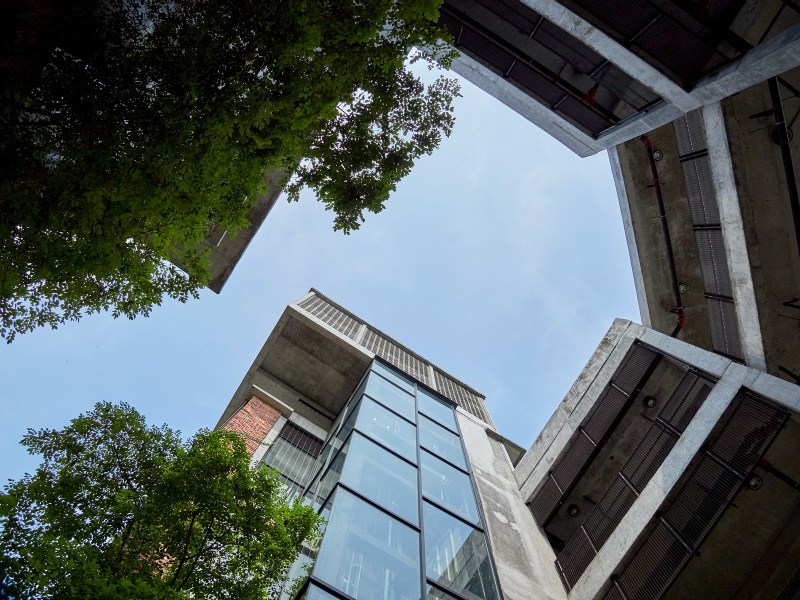
12mm, F5.6, 1/1600sec, ISo200, No chromatic aberration observed at harsh and high contrast areas of the frame

12mm, F5.6, 1/125sec, ISO200, for more complicated image with unpredictable patterns, purple fringing may not be fully corrected. Observe the window panels at both top left and right of the frame.
At 455g, the lens does not feel heavy at all, even though it is about 100g heavier than the 12-40mm F2.8 PRO. It is still about 100g lighter than the 12-100mm F4 PRO. While the 12-200mm feels balanced on the E-M1 Mark II, I cannot say the same if you are using smaller cameras like the PEN E-PL9. There is nothing much to say about autofocus performance – it is exactly the same as any other new M.Zuiko lens from Olympus. I’d highly recommend using this lens on OM-D bodies with powerful 5-Axis IS to get the best out of the lens.
The close up shooting of the 12-200mm is quite impressive. At wide angle 12mm, the lens can get as close as 10cm to the subject, creating an interesting wide angle macro perspective, which I rarely use in my own shooting. At the telephoto end, the lens can still achieve magnification of 0.46x, that can be useful for some quick pseudo-macro shots in the absence of a macro lens.

12mm, F5.6, 1/1000sec, ISO200, an example of wide angle close up shooting. Sharpness is very good in close up shots.

200mm, F6.3, 1/250sec, ISO200, telephoto macro shooting is also very good, but noticeably less detailed than wide angle macro.
For anyone looking for a comparison against the 14-150mm lens, the extra 50mm at the telephoto end won’t mean much, but the 12mm wider angle can make a difference in fitting more into the frame in tight spaces. Also, based on my personal shooting experience, the 12-200mm is noticeably sharper (though by small margin) at the wider end. If you want to compare against the 12-100mm F4 PRO lens, the 12-100mm lens is superior in every aspect. However, it is also larger, heavier and more expensive.
I do think that the Olympus 12-200mm is quite an interesting lens. While the lens may not give you the typical Olympus razor sharp image output at the longer end, it performs very well in the 12-100mm zoom range. If you are looking for absolute sharpness, there are PRO grade lenses with superior optics to consider, as well as high quality prime lenses from Olympus or Panasonic. What impressed me most was the flare control of the lens and the fact that despite such a massive zoom range, Olympus managed to keep the size and weight down to a comfortable level. Weather-sealing is a welcome bonus. As long as you do not shoot constantly in dim light, I see no reason the 12-200mm cannot deliver satisfactory results.
__________________
We are also on Facebook and there is a curated reader Flickr pool.
Images and content copyright Robin Wong 2019 onwards. All rights reserved

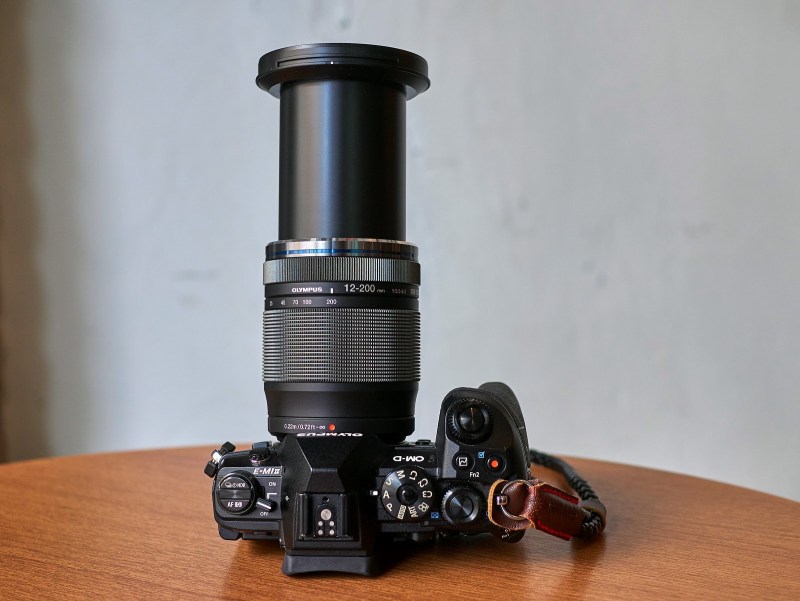
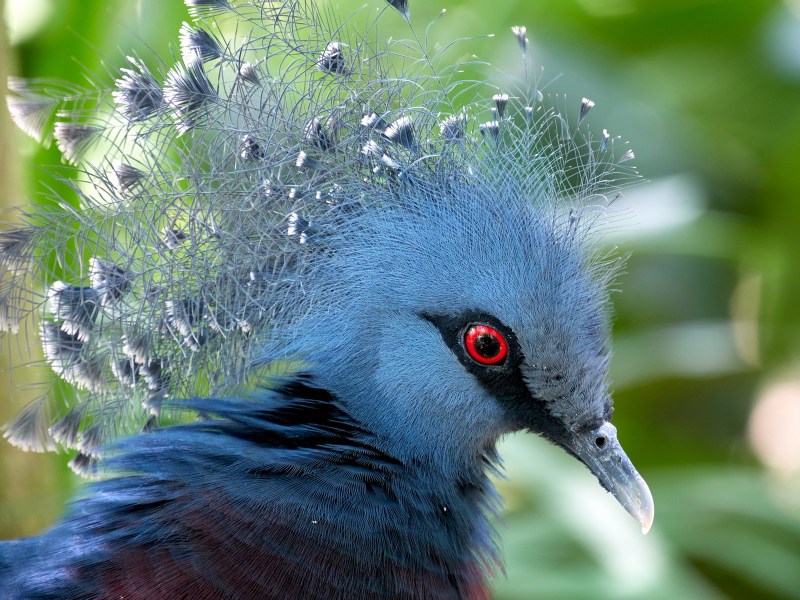

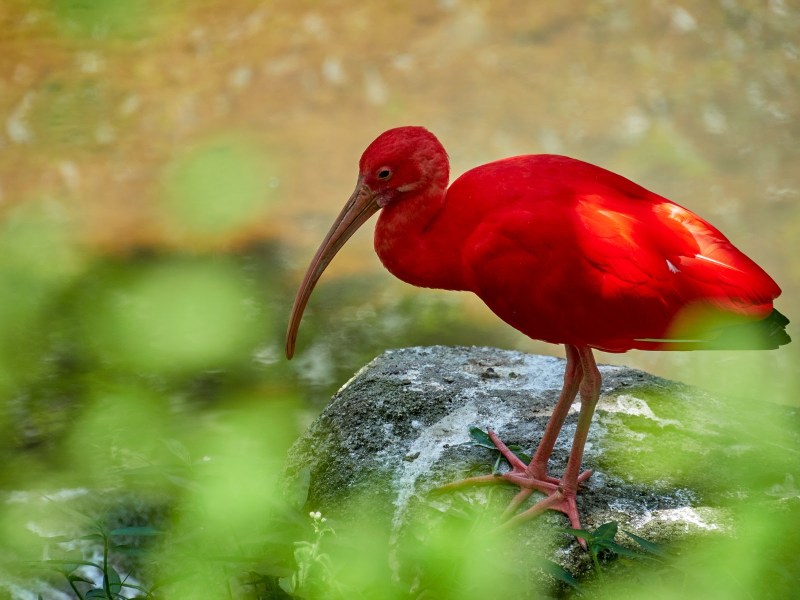


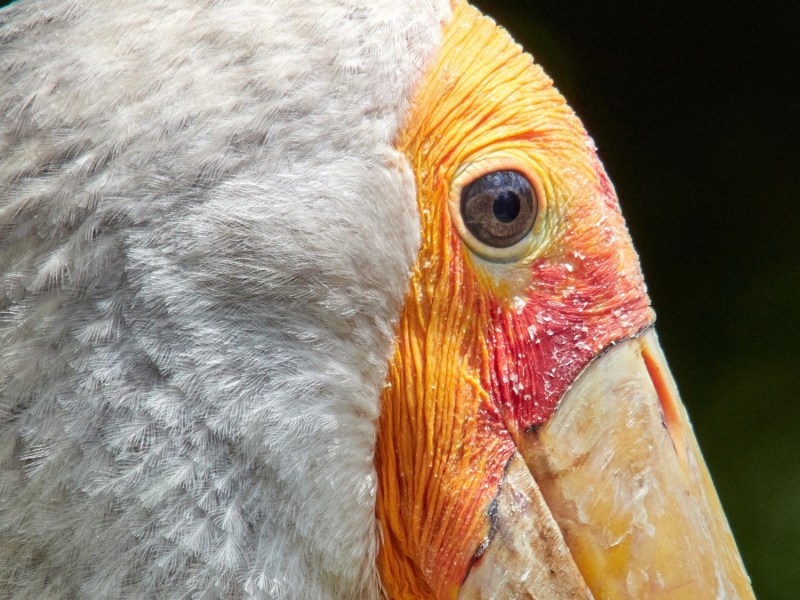

















Robin, where can I find a leather wrist strap like the one on the camera pictured?
I travel for months at a time in Southeast Asia and Central/South America carrying an EM5II. I no longer sell my work, and when I did it was part time. I’ve tried carrying the 14-150 Olympus, or a 12-40 PRO and the 75-300. The 14-150 just isn’t wide or long enough, and carrying the other two lenses sometimes ended up introducing dust or rain drops into the camera (sometimes I backpack etc), and I’d miss shots sometimes when changing lenses. I was getting ready to buy a Sony RX10-IV so I wouldn’t need to change lenses, but now with this lens and the EM5II, I can have the water/dust resistance, and focal length (the long end will crop down to about the same definition as the RX10-IV, both at 600mm), and actually save a few ozs. Of course I will lose some light wide open, but hope that this setup will still be adequate. This lens release was a surprise to me, and just what I need, hopefully. Thank you for the information.
Excellent “non”-review. I appreciate the disclaimers, and the images and crops from the long end of the zoom tell the story perfectly. It seems to me that (ignoring the lack of IS in the lens) this lens should substitute well for the 12-100 lens at those focal lengths, and the images from the 100 to 200 mm FL range will probably be better in most cases than equivalent crops from the 12-100 lens. Add to that the much lower price and lighter weight – what’s not to like? A nagging dread about showing off results from the long end of the zoom? Hardly a concern until such time as a pro version is released.
Hi Robin,I read your impression of the 12-200mm of Olympus: you mention several times the PRO-quality of the 12-100mm and you’re right: for 200 dollars more one gets more quality and better low-light. But what about the wanted reach? Do you know if there is any future Oly-plan for a 2x converter for the 12-100m? I know: it will cost some bucks and a smaller diaphragm, but than one has AND the PRO quality AND the more reach!
But this is not to be expected from Oly: is it not a better solution to pair the 12-40mm 2.8 (which I and many Oly fans already have) with the Panasonic 50-200mm 2.8- 4.0?. One gets a PRO-grade quality, one wins 1,5 diaphragm, and the weight is 300 grams less as the a combo of Oly 40-150 2.8 with a 1.4 converter, at roughly the same prize?
Can you comment on this?
all the best : LOUIS (Netherlands)
Thanks for the review. I have the 14-150 and am selling it because I never use it – I find 14mm to be not wide enough, as you also observed. I do a lot of available light photography and so have mostly primes. However, the zooms are very useful when travelling and I think a PEN-F + 12-200 combo would make for a compact yet versatile pairing.
Comprar Lithium Carbonate Los Antidepresivos en en Espana. Comprar Eskalith Los Antidepresivos en Ecuador.
Thank you! Very helpful review. Have my primes for night and shallow dof, but need a ‘good enough’ lens for everyday and travel, and the 12-200 sounds like it fits the bill.
Seen on my iPad the lens appears to outperform your assessment of it. That probably means I lack the critical eye needed to see the deficiencies, but most of these shots — especially the 200mm examples — sing brilliantly. Chalk it up to excellent photography and processing.
Thanks Michael. MT’s “shooting discipline” rings true, especially in handling super telephoto zoom lenses!
Thanks Robin for the very good summary of this lens. It. sounds as though it is better than I expected. It is not a lens that meets my needs and desires, but it is always interesting to see what Olympus and other producers come up with. I think this is a lens intended for casual shooters and travel. I would expect to see it matched. up with the OMD-EM10 series a lot or the Pen cameras. Looks like it can still produce some very good prints, that may be better then adequate for casual, family and travel shooters. I still have my eye on the 12-100 F4 for an all around travel lens. Will be interesting to see exactly who the 12-200 appeals too. It is not for me, but that is perfectly okay. It still looks impressive, for what it does.
Thanks for the kind words, and you have a very good suggestion – pairing the 12-200mm with E-M10 Mark III or E-PL9, I think I may just do that soon and do another article. I have a feeling I won’t like it on E-PL9 (though the lens is not large, it may not be suitable for smaller cameras like a PEN).
I have the 14-150 II, but I don’t use it often. That doesn’t mean I don’t find it useful from time to time!
Sometimes, I just don’t want to carry a camera bag. (Sometimes, I cannot bring a bag full of lenses!) Sometimes, I’m loaning it to a neophyte, whom I don’t want distracted by too much choice. Sometimes, I’m in a harsh environment, and don’t want to expose the sensor to lens swaps. Sometimes, I have no idea what I’ll need, and want to just slap on a lens that “does it all.”
So, the 12-200 would fill that role for me, even better than the 14-150. That doesn’t mean I’ll get rid of my premium lenses — it just means that sometimes, premium lenses are inconvenient.
You are right about not needing to change lens in harsh (dusty) environment, I totally missed that out as a reason why a superzoom is important. Thanks for bringing that point up!
Hi Robin,
Very shortly after introduction you already have a review. A slendid one af that since it covers pretty much everything. Your conclusion is only logical after examination of what this lens can do and a clear indication, to me, that we’ll see more than just very high end models from Oly. Otherwise such a lens makes no sense. It seems to be a good companion for a future Em5.3 and a Em10.4 to my mind.
THX!
J.
Thanks for the kind words, I do my best to produce articles soonest as I can whenever a new product is released. I am glad you find the article useful.
Thanks Robin for the usual honest and rich review. I have the 14-150 II and I’m happy with it, but to be honest I’d upgrade in a heart-beat if it wasn’t for the price difference 🙂 I’m an architect and – apart from specialised UWA lenses – having 12mm at the wide end makes a big difference in a day-to-day lens. One downside I see is the much bigger front element: 58mm filters (as in the 14-150) are much cheaper…
I think the price difference was mainly due to the 12mm wider optics, to make it wider is more complicated for micro four thirds!
Doesn’t look too bad. Reminds me of those days when I had the 18-180 ZD Four Thirds lens. That lens did not impress me but it could be that in those days, the sensor tech (dark lens needing high ISO), autofocus confidence was much more primitive. I barely got a good shot out of the camera shop door that evening. Now, the sensor tech is much better, autofocus is much better, IBIS is much better. And the wide end is not 18 but 12. Hope the lens itself is better than the 18-180
Back in the days of DSLR there are a few other contributing factors to bad image quality from using a superzoom lenses – shutter/mirror shock (bigger issue with longer focal lengths), back/front focusing due to shallow depth of field at longer telephoto end, etc. These days, almost all these issues are effectively mitigated (anti-shock, 5-Axis IS, etc).
Some of the cheaper zooms are still a health hazard to “good photography”, Robin – and can even cause damage by sucking dust in. But some of the better ones are as good as primes, and far more versatile, as you know.
For someone getting started in digital, the Olympus system might be a great choice. For me, now, it’s a purely hypothetical idea – I’ve spent as much as I can afford, on gear that ties me to FF & HF Nikon cams and a suitable range of lenses & other related gear.
Robin, I’m guessing that for a lot of Olympus users this could turn out to be a very popular lens. Super zooms have a place. Bridge cameras show this, and have even longer (equivalent) zoom ranges, but they suffer from their, usually, 1/2.33 sized sensor. This severely limits IQ.
This lens provides an equivalent 400mm but with a larger and superior sensor, and even allowing for your observed reduction in sharpness at the telephoto setting, the quality shown by your crops of the birds still seems pretty impressive. It is not as if the penalty for this zoom range is mediocre quality at the extreme tele settings, unlike most of the super zoom bridge camera results I’ve seen published of late.
I think it reasonable to assume that photographers who habitually shoot at between 200mm and 400mm, say, and who are after the highest quality are likely to be using primes anyway. For everyone else I suspect this lens will do just fine.
Personal bias aside, yes I agree with you. Convenience is something that sells very well, and is the reason smartphone is a huge success. You are right about having very good results at 400mm equivalent focal length, on the micro four thirds sensor, it still outperforms any bridge compact camera results!
Very useful review, thanks for sharing!
Thanks, I am glad you find it useful!
Is this lens Movie-Still Compatible?
I know you don’t do much video, but superzooms are often useful in video.
Yes, all Olympus current lenses are MSC enabled. Basically the AF motor worked silently during AF and the microphone won’t pick up any sound.
Thanks for to mini review. I’m very impressed with raw files I’ve managed to download from various sources, even out to 200 mm. after working with the raw files, and taking into consideration limitations of depth of field, movement etc, I don’t see a huge difference in many of the images from what I am getting with my 12-100 at similar focal lengths and aperture settings. I know there are differences, but useful differences I’m not sure. Can you tell me how the lens performs at the closest settings corner to corner, lets say stopped down to f8-f13? in the 12-100 range? which is where I would set the aperture for many of my close up images of abstracts and other types of photos. Thanks again!